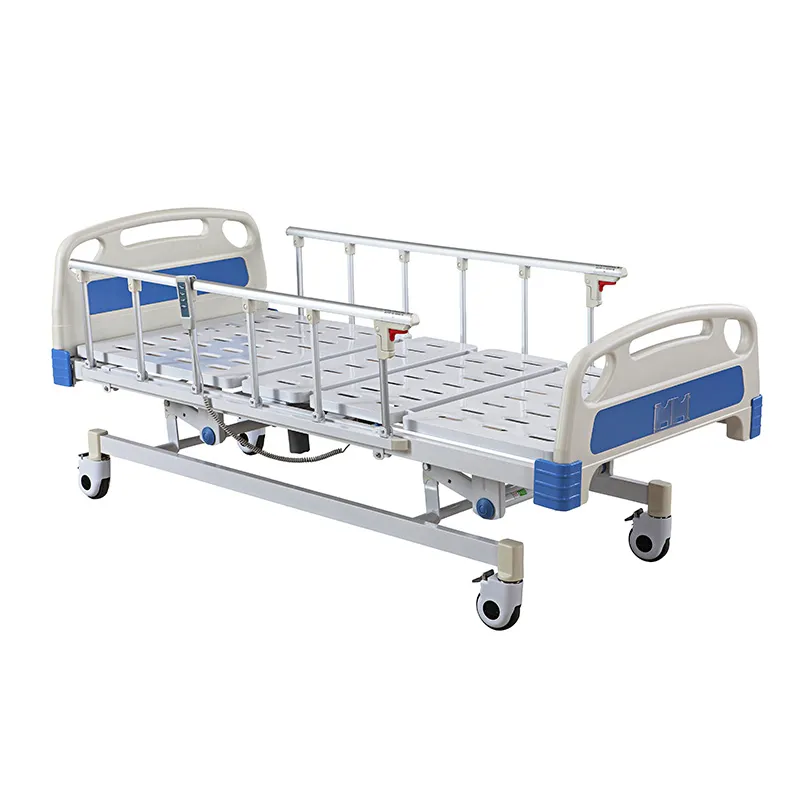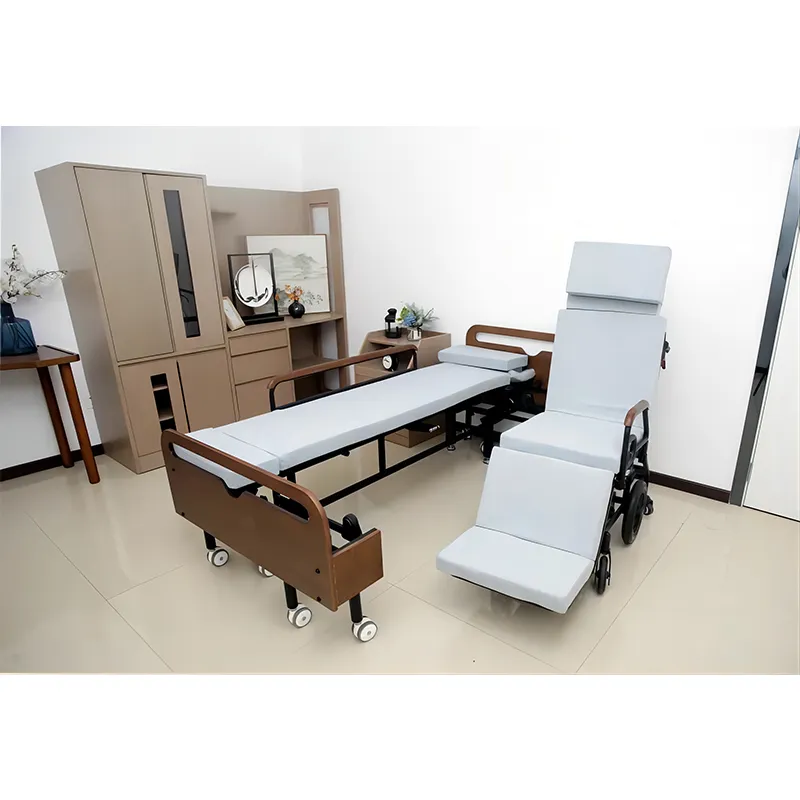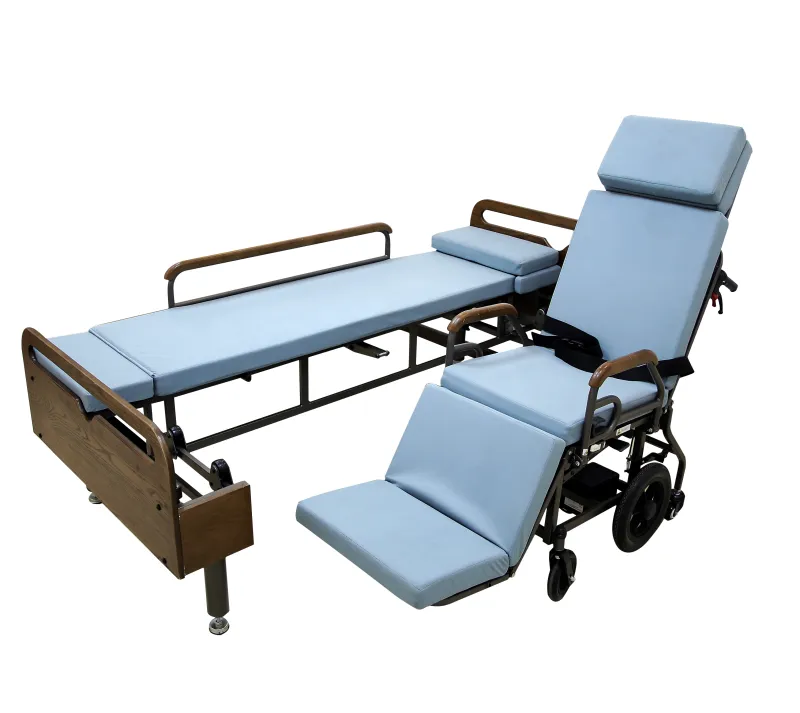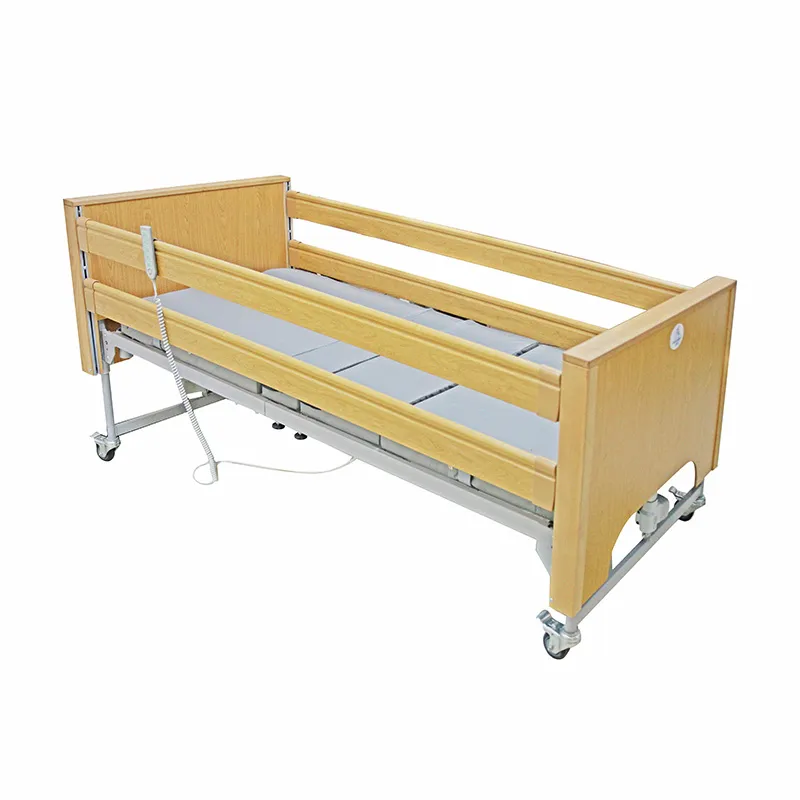
How can hospital beds help people with COPD?
2024-11-20 15:30
Comfort, whether in hospital or at home, is crucial for people with chronic obstructive pulmonary disease (COPD). Many people may not know that a hospital bed is more than just a simple place to rest, it can provide important support and help for people with COPD.
In this news article, we will take a closer look at what COPD is, its causes, risk factors, early symptoms, and whether there is a cure. More importantly, we will delve into how hospital beds play an important role in treating and managing COPD.

What is COPD?
Chronic obstructive pulmonary disease (COPD) is a group of progressive lung diseases, mainly including chronic bronchitis and emphysema. These diseases cause narrowing of the airways and limited airflow, making it difficult for patients to breathe. COPD is a long-term disease in which the patient's lung function gradually deteriorates over time. Shortness of breath, coughing and sputum are typical symptoms of COPD.
The chronic nature of COPD means that it does not occur suddenly, but develops gradually, usually after years of smoking or exposure to harmful gases. Although there is currently no cure for COPD, the quality of life of patients can be significantly improved through early intervention and proper management.
What causes COPD?
The main cause of COPD is long-term inhalation of harmful substances, which damage lung tissue and trigger an inflammatory response. The following are the main causes of COPD:
Smoking
Smoking is the main cause of COPD. According to statistics, about 90% of COPD patients have a history of smoking. Harmful substances in cigarettes, such as tar, carbon monoxide, and other chemicals, can cause long-term damage to the lungs. Even exposure to secondhand smoke may increase the risk of disease.
Air pollution
Long-term exposure to air pollution, especially in homes that burn coal or firewood indoors, can cause COPD. Industrial pollution, traffic exhaust, and chemical waste gas can also increase the risk of disease.
Occupational exposure
In some industries, workers may be exposed to harmful dust, chemicals, or fumes for a long time, all of which increase the risk of COPD. For example, occupational groups such as miners, construction workers, and chemical plant workers are high-risk groups.
Genetic factors
While environmental factors are the main cause of COPD, genetic factors also play a role. For example, alpha-1 antitrypsin deficiency is a genetic disease that increases the risk of COPD, especially in smokers.
Recurrent respiratory infections
Multiple severe respiratory infections, especially in childhood, can cause long-term damage to the lungs and increase the risk of COPD in adulthood.
Who is at risk for COPD?
The risk of developing COPD is affected by multiple factors, some of which are avoidable and others that cannot be controlled. Understanding these risk factors can help with early identification and prevention.
Smokers
As mentioned earlier, smoking is the main risk factor for COPD. Therefore, smokers are undoubtedly a high-risk group for COPD. In addition, people exposed to secondhand smoke, especially those who live with smokers, are also at risk of the disease.
Occupational exposure
People working in industries such as chemicals, coal mining, and textiles are at a higher risk of developing COPD due to long-term exposure to harmful substances. Such people should take effective occupational protection measures, such as wearing protective masks and improving ventilation systems, to reduce exposure risks.
People exposed to air pollution
Living in areas with poor air quality for a long time, such as highly polluted areas in cities or homes with poor indoor environments, increases the risk of developing COPD. It is recommended that such people monitor air quality regularly and use air purifiers to improve the indoor environment when necessary.
Genetically susceptible people
People with a family history of COPD, especially those with alpha-1 antitrypsin deficiency, are at a higher risk of developing the disease. Although genetic factors cannot be changed, such people should pay special attention to avoid exposure to harmful substances and have regular lung function tests.
People with a long history of respiratory infections
People who have suffered from severe respiratory infections multiple times in childhood are at increased risk of developing COPD in adulthood. It is recommended that such people strengthen protection, avoid exposure to factors that trigger infection, and seek medical treatment in time.

What are the early symptoms of chronic obstructive pulmonary disease?
The early symptoms of chronic obstructive pulmonary disease may not be obvious, and many patients do not realize that they have COPD until the disease becomes serious. Here are some early symptoms of COPD, which usually gradually worsen over time:
Persistent cough
People with early COPD often have a persistent cough, especially in the morning. This cough is often called a "smoker's cough" and is often ignored because long-term smokers are more susceptible to lung irritation.
Expectoration
In addition to the cough, patients may cough up thick phlegm, especially in the morning. The phlegm is usually white or gray and may sometimes be tinged with blood. As the disease progresses, the phlegm may become thicker and harder to pass.
Shortness of breath
During physical activity, patients may feel shortness of breath, especially after climbing stairs or walking for a long time. This symptom is often mistaken as a normal part of physical exhaustion or aging, but it can actually be an early sign of COPD.
Chest tightness
Some patients experience chest tightness or discomfort in the early stages, especially when breathing. This feeling may be caused by obstructed airflow in the lungs and is usually worse after physical activity.
Recurrent respiratory infections
Because COPD patients' lungs are susceptible to infection, they may frequently have respiratory infections, such as colds, bronchitis, or pneumonia. Each infection causes symptoms to worsen and accelerates the progression of the disease.
Is there a cure for COPD?
Currently, there is no cure for COPD. However, through effective treatment and lifestyle adjustments, patients' symptoms can be significantly improved, disease progression can be slowed down, and quality of life can be improved. The following are common treatments for COPD:
Smoking cessation
For smokers, smoking cessation is the most effective way to slow the progression of COPD. Quitting smoking not only reduces the burden on the lungs, but also reduces lung inflammation and improves lung function. Although lung damage cannot be completely restored after quitting smoking, it can prevent further deterioration of the disease.
Drug treatment
Drug treatment for COPD mainly includes bronchodilators, anti-inflammatory drugs, and mucolytics. Bronchodilators can help relax airway muscles, improve airflow, and relieve dyspnea. Anti-inflammatory drugs such as inhaled steroids can reduce lung inflammation, while mucolytics help thin sputum and promote excretion.
Oxygen therapy
For patients with severe COPD, oxygen therapy is an important treatment. Oxygen therapy can increase the oxygen content in the blood, relieve dyspnea, and improve heart function. Many patients require long-term oxygen therapy at home to maintain stable blood oxygen levels.
Pulmonary rehabilitation
Pulmonary rehabilitation is a multidisciplinary treatment method that usually includes exercise training, nutritional guidance, and psychological support. Pulmonary rehabilitation aims to improve a person's strength and quality of life and reduce the number of hospital stays. Although pulmonary rehabilitation cannot cure COPD, it can help patients better manage their symptoms.
Surgery
For a small number of people with severe COPD, surgery may be an option. Surgeries include lung volume reduction surgery and lung transplantation. Lung volume reduction surgery improves the function of the remaining lung by removing some of the damaged lung tissue. Lung transplantation replaces the diseased lung to restore normal lung function. However, these surgeries are high-risk and are suitable for a small number of patients.

How do hospital beds help COPD?
Hospital beds are essential for the treatment and care of people with COPD. Traditional home beds often do not provide adequate support and comfort, while hospital beds can help patients better manage their symptoms and improve their quality of life through a variety of features. Here are some key roles that hospital beds play in the care of COPD patients:
Adjust the height of the head and feet
People with COPD may have trouble breathing when lying flat because this position causes the abdominal organs to put pressure on the lungs, restricting their expansion. Hospital beds can adjust the height of the head and foot, allowing patients to take a more comfortable semi-recumbent position, thereby reducing the burden of breathing and improving sleep quality.
Reduce nighttime dyspnea
Many COPD patients are prone to dyspnea at night, especially when lying flat. The tilt function of the hospital bed can help patients keep their upper body raised while sleeping, reduce lung pressure, and prevent nighttime dyspnea.
Promote sputum discharge
COPD patients often need to discharge sticky sputum, which may become more difficult when lying flat. Hospital beds can help patients take a posture that is conducive to sputum discharge and reduce the risk of airway obstruction.
Reduce the burden on caregivers
Caring for COPD patients may require frequent posture adjustments to ensure that patients breathe smoothly. The electric adjustment function of the hospital bed makes it easier for caregivers to help patients adjust their posture, reduce physical burden, and improve care efficiency.
Does lying down help chronic obstructive pulmonary disease?
For COPD patients, lying down is not always the most ideal resting position. When lying flat, abdominal organs may put pressure on the lungs, restricting airflow and making breathing more difficult. Especially at night, COPD patients are more likely to feel shortness of breath, resulting in poor sleep quality.
Advantages of semi-recumbent position
The semi-recumbent position is a common resting position for COPD patients. By raising the upper body, patients can reduce lung pressure and improve breathing. Hospital beds can easily adjust the height of the head and feet, allowing patients to maintain this position when sleeping or resting, thereby alleviating the symptoms of nighttime dyspnea.
Risks of supine position
The supine position, that is, lying flat, may increase the risk of dyspnea for COPD patients. When lying on your back, the abdominal organs increase the pressure on the lungs, and the expansion of the lungs is restricted, resulting in airflow obstruction. Therefore, COPD patients should try to avoid lying flat when sleeping and choose a position that is more conducive to breathing.
Which position is suitable for patients with chronic obstructive pulmonary disease?
For COPD patients, choosing an appropriate position can not only improve breathing, but also relieve symptoms and improve quality of life. The following are several positions suitable for COPD patients:
Semi-recumbent position
The semi-recumbent position is one of the most commonly used positions for COPD patients. This position reduces lung pressure by raising the upper body and makes breathing smoother. Patients can achieve this position by adjusting the height of their head in their hospital bed.
Side-lying position
The side-lying position is also a comfortable option for some COPD patients. When lying on their side, the abdominal organs put less pressure on the lungs, which helps improve airflow. However, patients should be careful not to completely compress the chest when lying on their side, so as not to affect breathing.
Forward-leaning position
When resting, COPD patients can adopt a forward-leaning position, which can reduce the burden on the diaphragm and improve airflow. Patients can use pillows or the head of the bed to support themselves in the forward-leaning position. The adjustable features of hospital beds can help patients achieve this position more easily.

Which hospital bed is best for people with COPD?
For people with COPD, choosing the right hospital bed can significantly improve their quality of life. Here are a few types of hospital beds that are suitable for people with COPD:
Electric hospital beds
Electric hospital beds are ideal for people with COPD. This type of bed is equipped with electric adjustment features, and patients can easily adjust the height, tilt angle, and mattress firmness of the bed through a remote control. Electric beds also have guardrails for additional safety.
Low-level hospital beds
Low-level hospital beds are very useful for COPD patients who have limited mobility. The height of this bed can be lowered to a position close to the ground, making it easier for patients to get in and out of bed and reduce the risk of falling. Low-level beds can also be used with a lift to help caregivers easily transfer patients.
Anti-pressure sore mattress beds
COPD patients are prone to pressure sores due to lack of exercise when they are bedridden for a long time. Anti-pressure sore mattress beds prevent the occurrence of pressure sores by evenly distributing the body weight and reducing local pressure accumulation. This bed is equipped with a special mattress that can be adjusted according to the needs of the patient.
In general, COPD is a serious chronic disease. Although it cannot be cured, the quality of life of patients can be significantly improved through reasonable treatment, lifestyle adjustments and the use of appropriate hospital beds. Understanding the symptoms and treatments of COPD and choosing the right hospital bed are important steps for patients and their families to deal with this disease.








